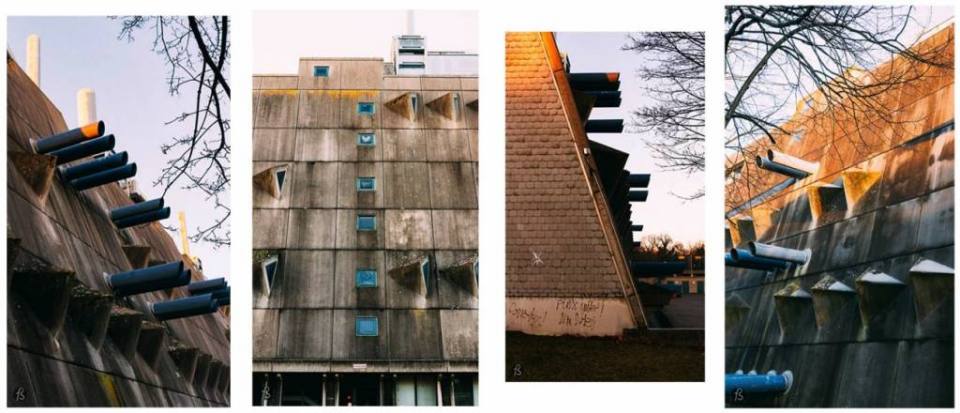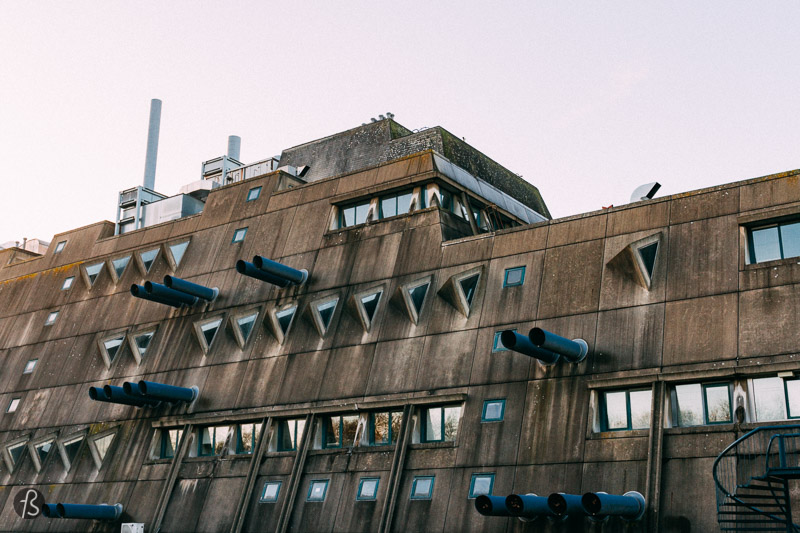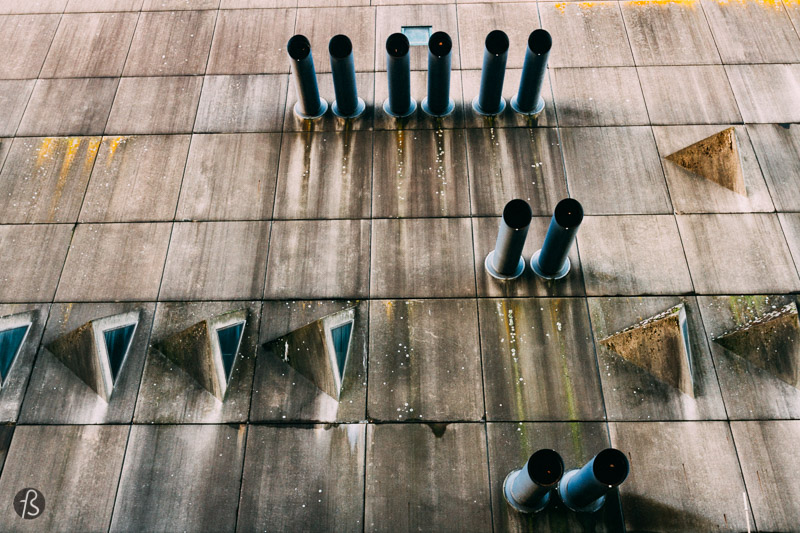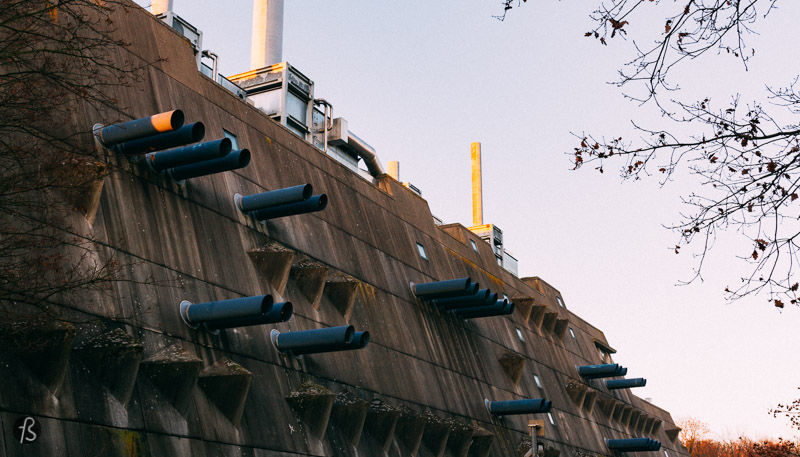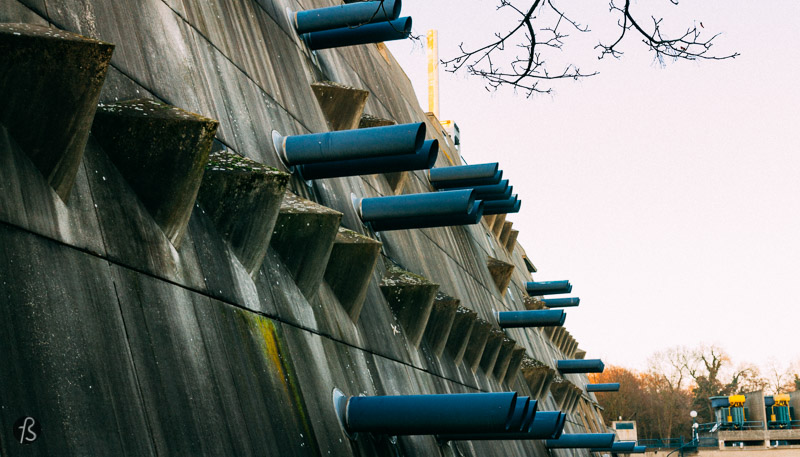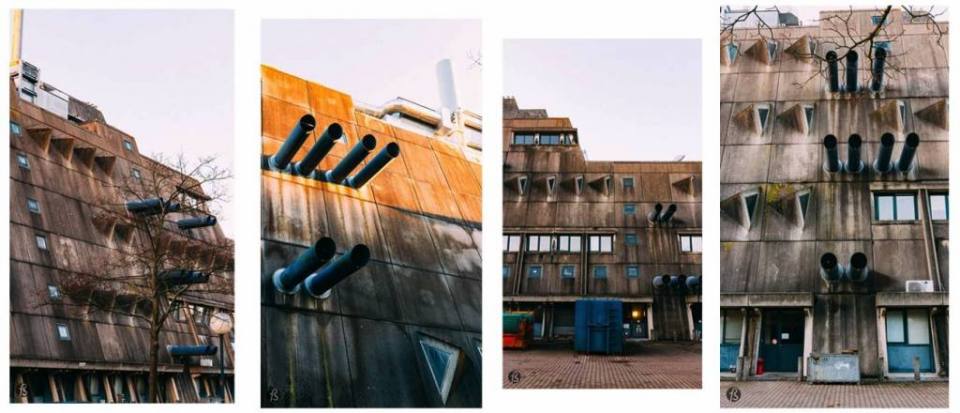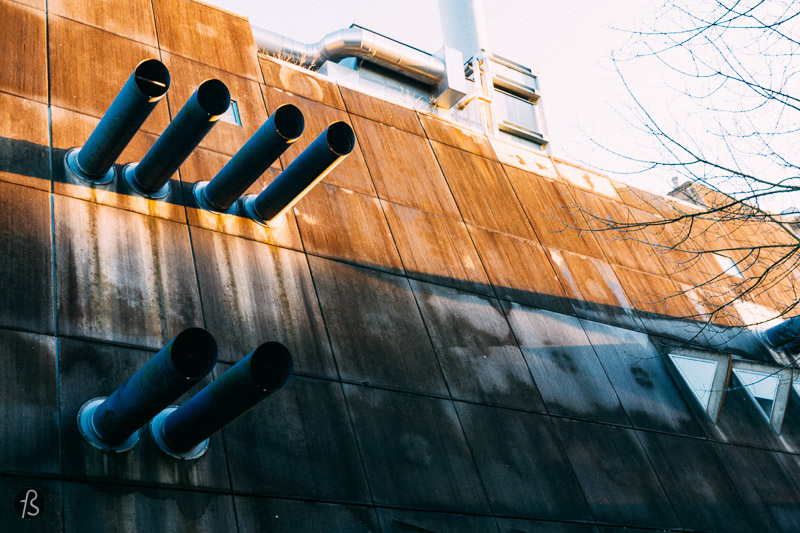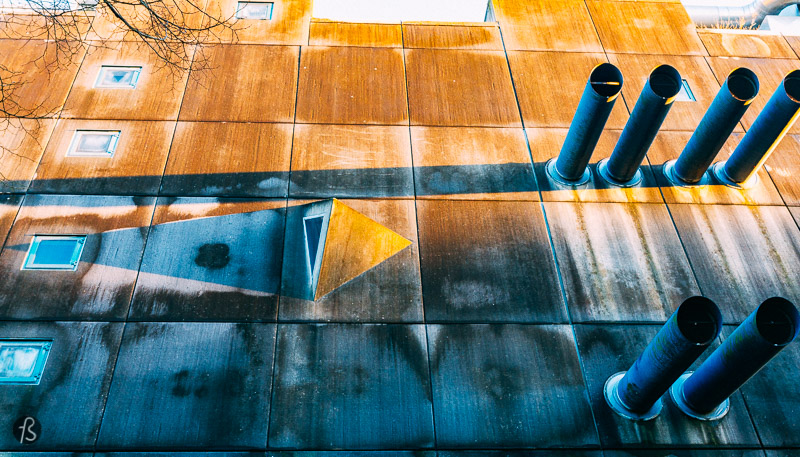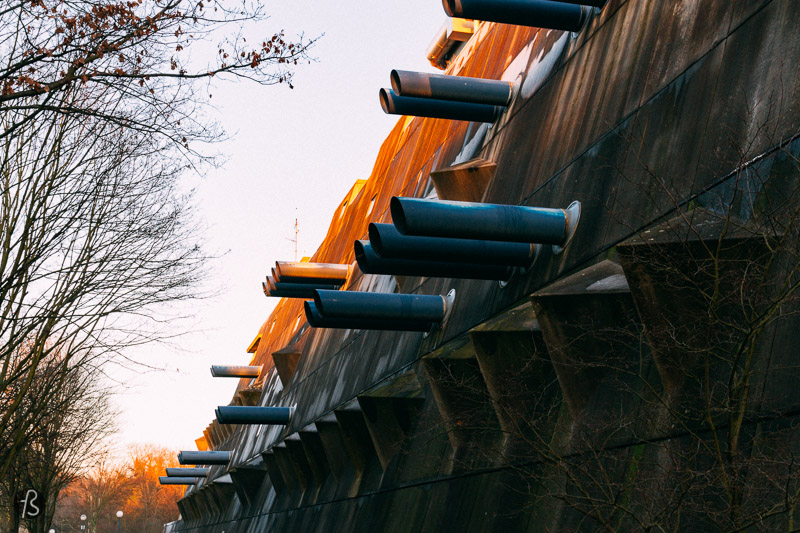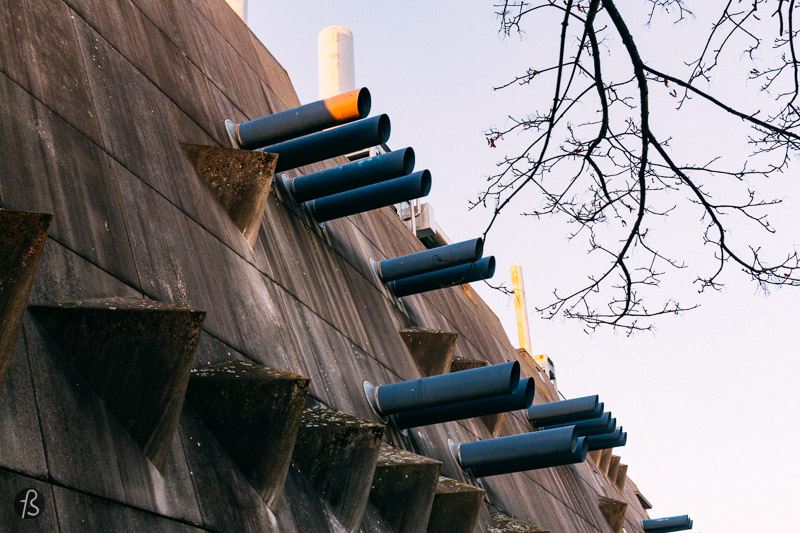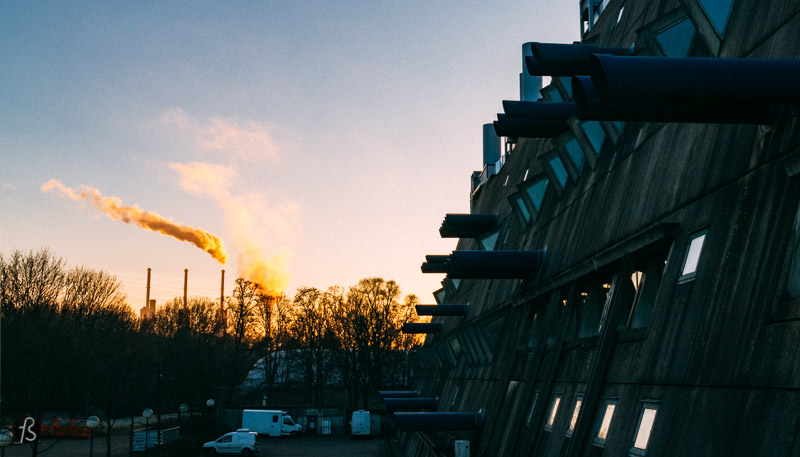The Central Animal Laboratory of the Freie Universität, known as the Mäusebunker, is one of Berlin’s best examples of Brutalist architecture. We visited the building at the end of December 2016 to see this strange-looking structure in the middle of Lichterfelde.
It took us a while to find it, but once you see it, there is no way of ignoring it based on its monstrous appearance and the contrast with the area surrounding it.
We first came across this building on a Pinterest board about architecture. At that moment, we knew we needed to learn more about the structure and visit the place to take pictures of everything. But we were not expecting to find such an odd-looking building in Lichterfelde, between the Teltowkanal and a busy road in Steglitz.
We are mentioning the area here because it contrasts the location that turns the Mäusebunker into such an architectural piece of art.
Who came up with the Mäusebunker?
The Mäusebunker was designed by Gerd Hänska, a German architect whose work can be stylistically described as brutalism. In the sixties and seventies, he created the Walt Disney Elementary School in Gropiusstadt and the Kindertagsstätte of the Karl-Bonhoeffer-Nervenklinik in Wittenau.
But his most famous work is the infamous Central Animal Laboratory of the Freie Universität.
The Mäusebunker construction took over a decade of development due to opposition from the people in the neighborhood and animal rights activists. There was also a funding issue. The initial cost estimation from the project was around 4 million Deutschmarks, but it ended up costing close to 126 million by the end of construction.
All of this was to have an animal laboratory that could host up to 45,000 mice, 20,000 rats, 5,000 rats, and a smaller number of frogs, sheets, chickens, and pigs. Today, fewer animals are there, and the focus is only on mice, emphasizing transgenic models for disease research.
You almost feel like you shouldn’t be there when you visit this place. How the Mäusebunker was designed brings up a threatened or intimidating presence. Walking around it made me wonder why this structure needs to be defended—something like a spaceship out of a sci-fi movie.
And we can only imagine how the building must have looked to the people in the seventies in Berlin. Before the concrete was discolored and the brown marks started to show, maybe this building was attractive to the people around it. But we cannot be sure about it.
Why you should visit the Mäusebunker
One of the first things that caught our eyes when we visited the Mäusebunker was the sloped angles of the outer walls, making it look like one of the many Berlin Bunkers from the Second World War. Such a geometrical feature is something we don’t see in most buildings, making this place even more interesting for our cameras.
This basic shape is interrupted by sections of large cylindrical blueish and gray ventilation pipes that serve as a way to control and provide air supply to the laboratories inside. But they made it look even more like a military spaceship which we love for real.
In the last few years, the building has been in the news for the death of several technicians exposed to asbestos. In 2010, the Mäusebunker went through renovations. Supposedly, everything is fine now. Since we didn’t go inside the building, there is no way for us to tell this for sure.
We’re fans of the Mäusebunker for its utilitarian look, visual originality, and innovative design. Most people see an ugly building, but we are trying to look beyond it, which is why everyone interested in architecture should visit this building in the south of Berlin.
Mäusebunker — Freie Universität Berlin, Zentrale Tierlaboratorien
Krahmerstraße 6, 12207
Berlin, Germany
